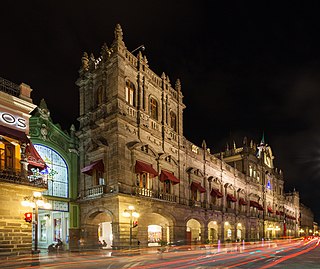Related Research Articles

San Cristóbal is a city in the southern region of Dominican Republic. It is the municipal (municipio) capital of the San Cristóbal province. The municipality is located in a valley at the foothills of the mountains belonging to the Cordillera Central, between the Nigua and Nizao rivers. Within this municipality there is one municipal district : Hato Damas.

Trinidad is a town in the province of Sancti Spíritus, central Cuba. Together with the nearby Valle de los Ingenios, it has been a UNESCO World Heritage Site since 1988, because of its historical importance as a center of the sugar trade in the 18th and 19th centuries. Trinidad is one of the best-preserved cities in the Caribbean from the time when the sugar trade was the main industry in the region.

A batey is a settlement around a sugar mill. They can be found in Cuba, the Dominican Republic and Puerto Rico.
A Slave Bell is a bell that was rung to regulate the day on slave plantations and in slave societies. They were featured in slave plantations throughout the Americas and notably in the slavery systems in Cape Colony, present-day South Africa. The structures they were housed in, most often tall pillars and towers, became landmarks on the plantation and could be used to surveillance the enslaved workers. In some cases, these structures have become a symbolic feature of the architectural style of that region and the architecture of plantation slavery. In South Africa, the pillars of the slave bell is a distinctive feature of the Cape Dutch architectural style.

Ciudad Colonial is the historic central neighborhood of the Dominican Republic's capital Santo Domingo. It is the oldest continuously inhabited European-established settlement in the Americas. The area has been declared a World Heritage Site by UNESCO. It is also known as Zona Colonial or more colloquially as "La Zona".
Valle de los Ingenios, also named Valley de los Ingenios or Valley of the Sugar Mills, is a series of three interconnected valleys about 12 kilometres (7.5 mi) outside of Trinidad, Cuba. The three valleys, San Luis, Santa Rosa, and Meyer, were a centre for sugar production from the late 18th century until the late 19th century. At the peak of the industry in Cuba there were over fifty sugar cane mills in operation in the three valleys, with over 30,000 slaves working in the mills and on the sugar cane plantations that surrounded them.
Villa Mella, or San Felipe de Villa Mella, is a municipality in Santo Domingo Norte, Dominican Republic. Villa Mella is located north of the Isabela River, about 6 miles to the north of the center of Santo Domingo, and is considered an additional neighborhood of the capital. This sector is considered one of the economically stable areas in the Santo Domingo metropolitan area. It is also home to the musical organization known as the Brotherhood of the Holy Spirit of the Congos of Villa Mella, recognized in 2001 by UNESCO.

In the history of the Dominican Republic, the period of Era de Francia occurred in 1795 when France acquired the Captaincy General of Santo Domingo, annexed it into Saint-Domingue and briefly came to acquire the whole island of Hispaniola by the way of the Treaty of Basel, allowing Spain to cede the eastern province as a consequence of the French Revolutionary Wars.
The historic Sugar Mill of Diego Caballero is located roughly 8 km from San Cristobal in San Cristobal Province, Dominican Republic. The mill was originally established by Don Diego Caballero de la Rosa, who was councilor of Hispaniola . The sugar mill at one point had a church with full clergy and approximately 60 stone houses for its population of African slaves, Indians, and Spaniards.
La Duquesa Sugar Mill, founded in 1882 by American machinist Alejandro Bass and F. Von Krosigh, is located in the Distrito Nacional of the Dominican Republic.
The ancient big house of Palavé, located roughly 22 km to the west of Santo Domingo, the capital of the Dominican Republic. Its unique architectural style and ancient age has led to its consideration to be put on the World Heritage list of sites who have "outstanding universal value" to the world.
The Ingenio Engombe is located in the Santo Domingo Oeste municipality from the Santo Domingo province of the Dominican Republic. The 16th century mill was a leading regional producer of sugar, and a signifying exemplar of renaissance-era architecture for its lavish forms. A two-story mansion and a chapel remain standing on the sugar mill grounds. The site is being considered to be put on the World Heritage list of sites who have "outstanding universal value" to the world.
The Sanate Sugar Mill is located near the Sanate Abajo River in the La Altagracia Province of the Dominican Republic.
Santo Domingo Ingenio is a town and municipality in Oaxaca in south-western Mexico. It is part of the Juchitán District in the west of the Istmo de Tehuantepec region.

Tourism in the Dominican Republic is an important sector of the country's economy. More than 10 million tourists visited the Dominican Republic in 2023, making it the most popular tourist destination in the Caribbean and putting it in the top 5 overall in the Americas. The industry accounts for 11.6% of the nation's GDP and is a particularly important source of revenue in coastal areas of the country. The nation's tropical climate, white sand beaches, diverse mountainous landscape and colonial history attracts visitors from around the world. In 2022, the nation's tourism was named the best-performing nation post-pandemic with over 5% visitors more in comparison to pre-pandemic levels in 2019.

The historic centre of Puebla was declared a World Heritage Site by UNESCO in 1987.
References
Boca De Nigua Sugar Mill (#) [Ruta de Los Ingenios] - UNESCO World Heritage Centre Accessed 2009-02-26.